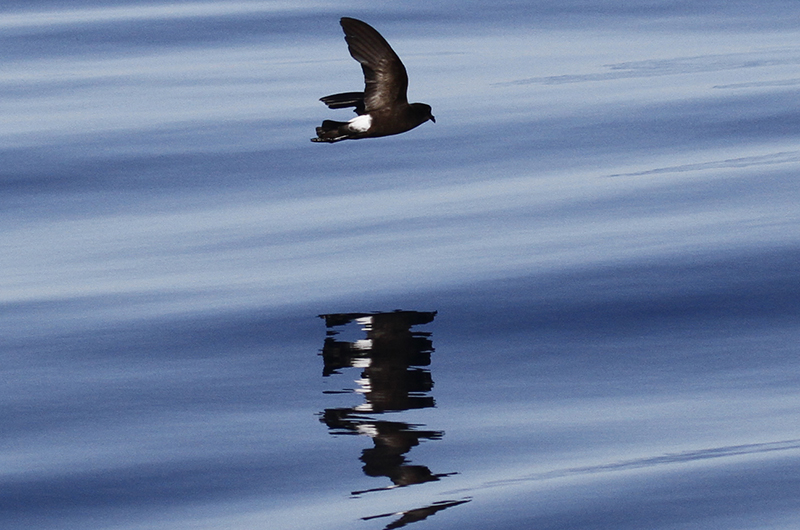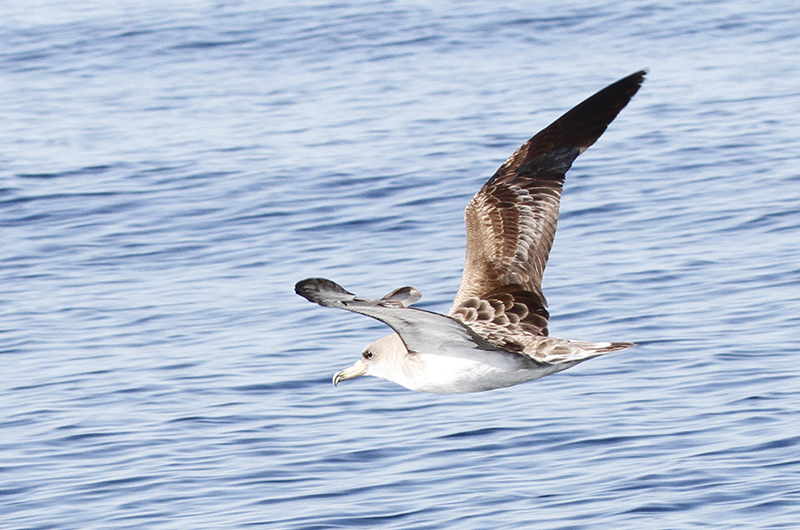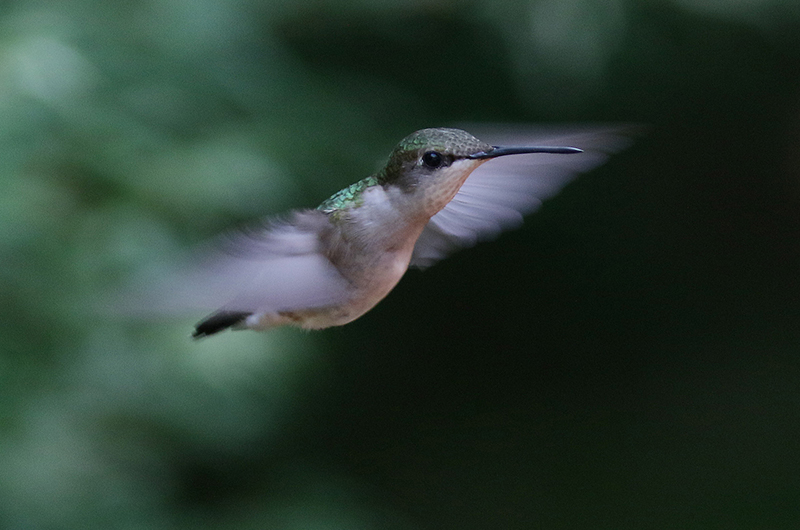Tropical storm Henri came and went on August 22, 30 years and three days after Hurricane Bob pummeled our shores. Everyone will agree that Henri treated us much more gently. Of course, birds are affected too.
Why do southern strays show up after strong storms? Ocean-dwelling birds caught up in the air by hurricane-force winds will keep flying downwind, and the counter-clockwise spinning storm winds will carry the trapped birds inward into the calm of the eye of the storm. Once there, they keep flying until the eye of the storm passes near land, where they find refuge and escape the storm.
Songbirds caught in these storm winds may not be so lucky. They may not be strong enough to stay airborne long enough to reach land’s safety.
Maybe you have noticed that approaching storms cause birds to settle down and become very quiet, contributing to the so-called quiet before the storm. Apparently they have pressure-sensitive organs in their ears and can detect the low pressures associated with a coming storm. They can then seek protection from the wind before the storm hits, downwind of a sturdy tree trunk, evergreen woodlands, a cavity or dense thickets.
After the storm moves on, we may find a lot of displaced songbirds and waterbirds that have been carried northward. Birders like to find these displaced birds while they rest, feed and build up their strength before they continue their migration. The good news is that their internal hard-wired GPS navigation system will likely guide them back to where they were headed before the storm interrupted their travels.
Some of the birds we may find after a storm include brown pelican, white pelican, royal terns, sooty terns, sandwich terns, magnificent frigatebirds, red-billed tropicbird and various shearwaters and storm-petrels that tend to be in our northern waters but generally are out to sea, closer to the Gulf Stream and other rich fishing grounds.
The hurricane-driven birds that we have seen so far are the shearwaters and storm-petrels. But keep in mind that they were here in small numbers before Henri came. John Nelson aboard the fishing vessel Skipper reports that on August 13 he found Wilson’s storm petrels out on Hedge Fence shoal, east of Oak Bluffs. And recently there have been a few reports of shearwaters and a parasitic jaeger.
There are two reports of shearwaters on August 22 during Henri. Shea Fee visited Wasque and found three great shearwaters and parasitic jaeger, while on August 18 her highlights there were a merlin and a laughing gull. Allan Keith, Susan Whiting and Bob Shriber visited Aquinnah with hopes of finding unusual birds but were not successful. Max Chalfin-Jacobs visited Moshup Beach an hour earlier in the afternoon and noted 22 jaeger species, 600 Cory’s shearwaters, 10 great shearwaters, and five sooty shearwaters. Goes to show that timing is important as the wind conditions could have changed dramatically in the intervening hour, allowing the shearwaters to disperse or travel elsewhere.
I will conclude this hurricane primer by asking why there is a windy eastern side and a rainy western side of a hurricane. This seems odd since hurricane winds circle counterclockwise completely around the more or less center — the “eye” — of the storm. I am sure there is a quick answer from a search on the internet, but I will leave that for you.
It has been a fairly quiet week. On August 21, Stuart Santos found two solitary sandpipers in the small pond at the State Forest headquarters.
Four blue-winged teal were on a pond on Allan Keith’s farm on August 22, observed by Bob Shriber and Allan Keith; they may or may not have been refugees from the storm. And Shea Fee spotted an American redstart at Wasque that day. While at North Neck on Chappaquiddick, she spotted laughing gull, sharp-shinned hawk, six eastern kingbirds, and two pine warblers. A northern parula was found by Jennifer Mahony at Blackwater Preserve on August 22.
Allen Keith visited Norton Point Beach and spotted three whimbrel, three lesser yellowlegs, five greater yellowlegs, 15 black-bellied plovers, a flock of 375 common terns, least and semipalmated sandpipers, willets, one piping plover and a saltmarsh sparrow.
The yellow-crowned night-heron that has been hanging out at Brush Pond was most recently seen by Jeff Peters on August 22. That same day, he also spotted two black terns and 20 laughing gulls at Sarson’s Island.
On August 18, I found a seemingly unusually large flock of 27 mourning doves perched on the power lines at the solar array near the Tisbury Park and Ride. I also spotted a raven near the Verizon building, and a Baltimore oriole at home.
Finally, possibly everyone’s favorite bird is the ruby-throated hummingbird. This past week, they have been spotted across the Island by Lisa Maxfield, Sioux Eagle, Joan Jenkinson, Christy Edwards, Jeanne Lane, Shea Fee, Bob Shriber, Jeff Bernier, Mary Johnson and Susan Wilson. We are just about at the peak of their migration, and they will be around for the next month, although in ever-smaller numbers.
Please email your sightings to birds@mvgazette.com.
Robert Culbert is an ecological consultant with Nature Watch LLC living in Vineyard Haven.








Comments
Comment policy »